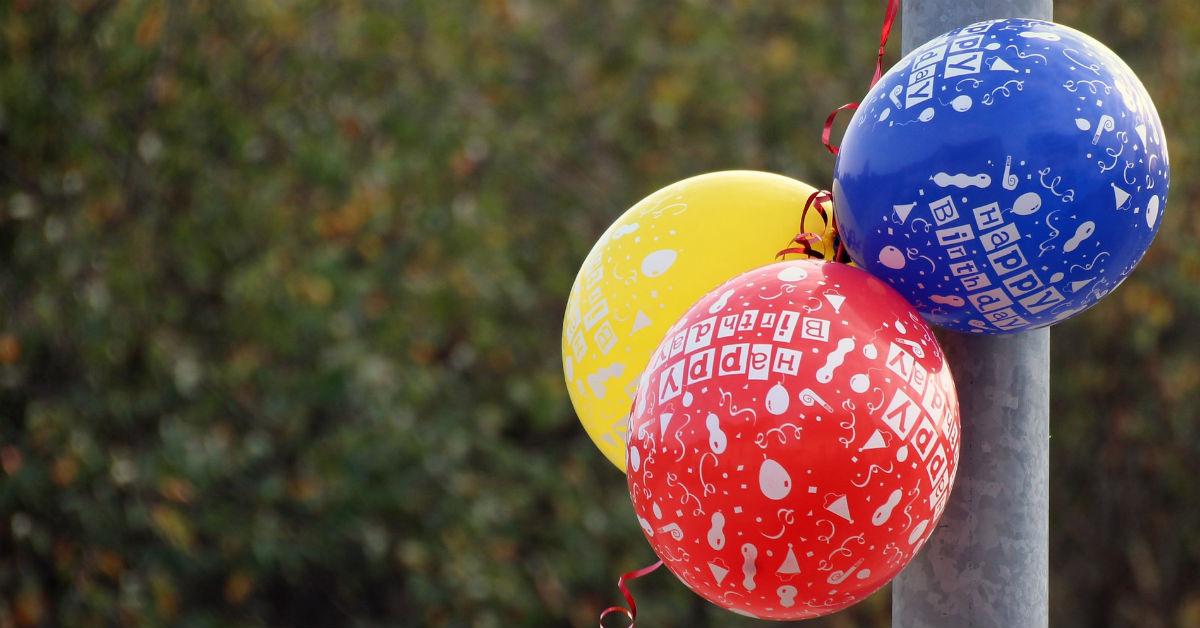There Is A Growing Movement To Ban Plastic Balloons
Could balloons be the new plastic straws? Colleges have stopped releasing them on game days, and some U.S. town are banning them completely.
Updated May 31 2019, 3:21 p.m. ET
With plastic straws and now ketchup packets potentially on their way out, environmental advocates have set their sights on a new single-use plastic: balloons. The popular party decoration has long earned criticism for the pollution it causes and harm it poses to wildlife, but recent policy changes indicate there’s a growing momentum against balloons — and even support for full bans.
In July, Clemson University announced it was ending its game day tradition of releasing 10,00 balloons as football players run down the hill at Memorial Stadium. The University of Nebraska-Lincoln may follow suit, as pressure builds for the school to stop its own ritual of releasing red balloons during the first score of the game. The non-profit Balloons Blow recently rented a billboard in Lincoln imploring Huskers to “stop littering, end the balloon release!” It will remain up for the next three weeks, as students start a new semester.
But the campaign extends beyond college campuses. The town of New Shoreham, Rhode Island voted to ban the sale and use of balloons back in April, promising a $200 fine for any offenders.
“We are very concerned about the environment,” Kenneth Lacoste, the first warden of the town council, told CNN. “There’s a lot of information out there of damages that balloons do to the wildlife.”
Balloon bans are fairly popular in New England, where concerns over protecting marine life and the ocean itself have led to legislation. Chatham, Massachusetts also approved a balloon ban this May, set to take effect in the fall, while Nantucket and Provincetown kicked the decorations out of town in 2015 and 2014, respectively.
These anti-balloon laws have also gained traction further down the East Coast. Last year, Palm Beach County imposed bans on 11 beaches to protect sea turtles, after discovering deflated balloon debris in the stomachs of dead hatchlings.
While there have been vocal balloon critics since at least the 1990s, many are now crediting the wave of plastic straw bans with galvanizing the anti-balloon campaign. “The issue of straws has really broadened the marine debris issue,” Emma Tonge, a communications rep for the National Oceanic and Atmospheric Administration, told the AP.
She believes that because balloons are “light and whimsical,” people often fail to see them as a serious environmental threat.
But NOAA and specialized groups like Balloons Blow point to multiple dangers. Balloons can wander onto beaches, strangling the seagulls and turtles that get caught in their strings. These animals also mistake the party decorations for jellyfish, eating them and often dying as a result.
Balloons don’t just harm wildlife, or pollute the shore. They can also knock out the power. Pacific Gas & Electric reported 203 power outages in northern and central California caused by metallic balloons, in the first five months of this year alone. That's a 22 percent increase from 2017.
So could balloons go the way of plastic straws? Five U.S. states already have laws prohibiting balloon releases, while similar legislation has hit nearly two dozen American cities. As new balloon bills wind through councils and committees, advocates are urging party planners to adopt eco-friendly alternatives, like paper garlands and streamers.

